CATEGORY > Customer Journey
Customer Journey Map: The Ideal Blueprint To Achieve Customer Success
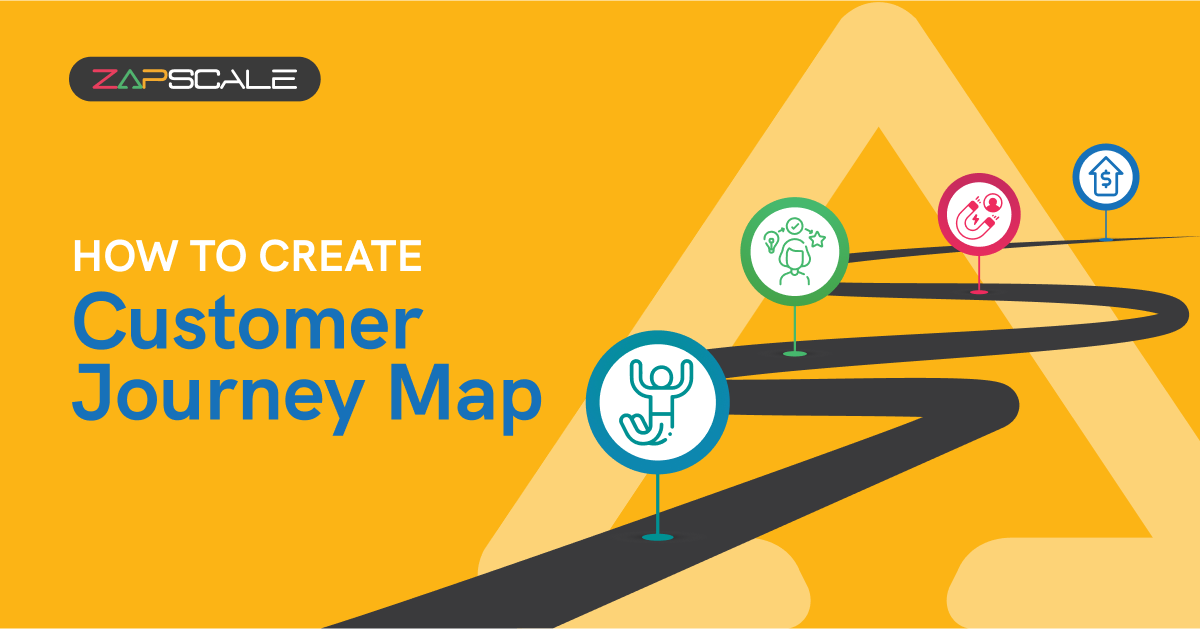
Introduction
In the context of customer success, the first step towards understanding and enhancing the CX (Customer Experience) is often marked by creating a “Customer Journey Map”. Think of a Customer Journey Map as the guiding star— a compass that directs your efforts toward understanding, anticipating, and fulfilling the desires of your valued customers.
Now, what more is there to learn about a Customer Journey Map and why should a business owner bother about creating one in his or her already busy schedule? Well, all these questions are about to be answered in this article.
What is a Customer Journey?
Technically, a Customer Journey entails all interactions a customer has with a specific brand before making a purchase.
For instance, a customer has to buy a cake for his mother’s birthday, he looks online for recommendations and comes across one particular website with customized cakes as per his liking. He decides to buy a custom cake and the cake turns out to be a real showstopper during the birthday celebration. This entire process reveals how businesses can cater to customer needs and create memorable experiences that enable loyalty or repeat business.
8 Distinct Stages of the Customer Journey
Since now we are quite crystal clear about the concept of the Customer Journey. Let’s talk a bit about the 8 unique stages that constitute the Customer Journey & Success atlas - Awareness, Consideration, Purchase, Onboarding, Adoption, Retention, Upsell, and Advocacy.
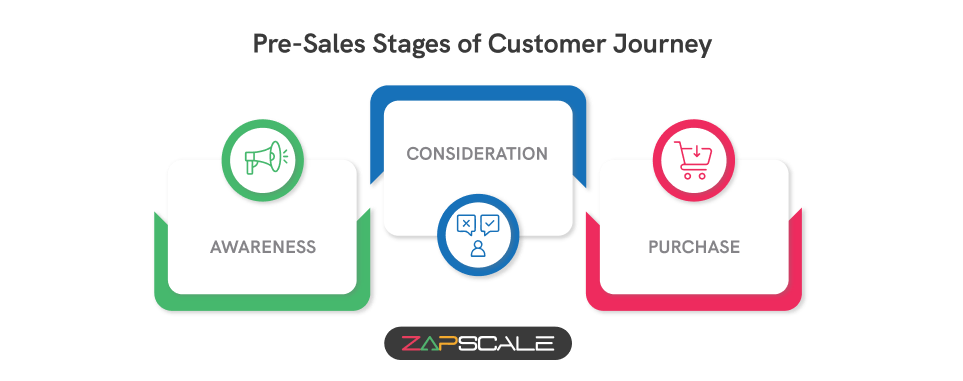
1. Awareness
The first stage a customer encounters during his or her journey is the “awareness” stage. Here, the customer discovers the brand, product, or service through various channels such as ads, social media, online search, or word of mouth.
2. Consideration
At this stage, the customer does his/her research and compares the products or services of different brands to make a sound decision.
3. Purchase/Decision
This is a critical stage in which the customer makes the final decision to purchase a specific product or service after weighing up several options.
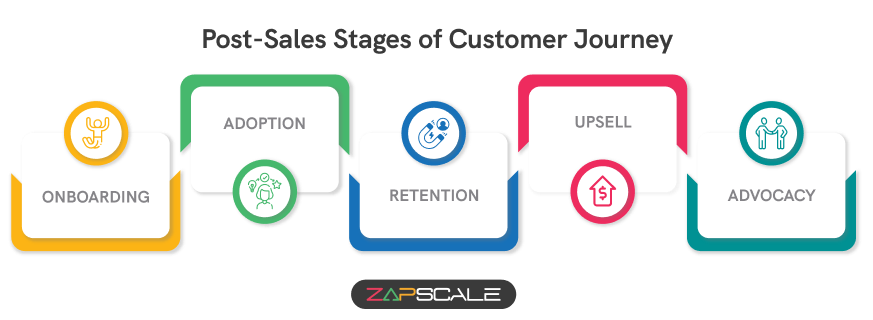
4. Onboarding
After purchase, the customer enters the onboarding stage in which they gain the initial experience with the product or service, understand its value proposition, and enjoy successful setup assistance.
5. Product Adoption
Now comes the stage of “adoption” in which the customer incorporates the said product or service into their daily life and workflows to encounter an enhanced user experience.
6. Customer Retention
At the retention stage, the respective Retention Specialist ensures that the customer stays with the brand for a longer timeframe. Brands develop retention strategies to build strong relationships with their customers and increase Customer Lifetime Value (CLV).
7. Upsell
This stage is all about expanding the customers by offering upgrades or additional products and services to generate higher revenue growth and profits for the business.
8. Customer Advocacy
The final stage, i.e., advocacy is an interesting stage where the satisfied customer becomes a loyal advocate of the respective brand. Now, the customer recommends the brand’s products and services, thus, uplifting the brand’s reputation.
Customer Journey Maps - What, Why, and How
Customer Journey Maps showcase a visual representation of all interactions a customer has with a particular business. This is an effective tool that enables brands to improve CX (Customer Experience) at each stage of the Customer Journey to enhance Customer Success or reduce churn rate.
Here are some proven benefits you can expect after deploying a Customer Journey Map.
1. Better Clarity on Customer Profiles
Customer Journey Maps offer brands a clear view of the buyer’s entire experience, through which they can even store accurate and updated customer profiles in their database.
2. Superior Omnichannel Marketing
A thorough customer journey map spans all touchpoints, enabling brands to enhance their Omnichannel Marketing funnel.
3. Enhanced Customer Experience
Another reason to develop a customer journey blueprint is to ensure greater CX (Customer Experience) across all channels.
4. Higher Customer Success Rate
With the aid of Customer Journey Maps, businesses can deliver personalized CX, gain insightful customer understanding, make data-driven decisions, improve customer retention, and amplify customer success rate.
5. Sustained Success
A Customer Journey Map can surely make way for sustained success through insightful understanding, targeted strategies, and continual improvements.
What’s Included In A Customer Journey Map?
Here is what typically goes into a customer journey map :
1. Buyer Persona
A detailed description of your ideal customer, including demographics, behavior, needs, and pain points. This helps build the journey map for specific types of customers.
2. Customer Stages
Includes awareness, consideration, purchase, onboarding, retention, and advocacy as discussed in the last section.
3. Touchpoints
Points of interaction between the customer and your business through social media, website, customer service, etc.
4. Customer Actions
Specific actions are taken by the customer at each stage, like searching for information, adding items to a cart, making a purchase, or contacting support.
5. Customer Emotions
The feelings and thoughts a customer experiences throughout their journey, help to identify the moments of delight or frustration.
6. Pain Points
Challenges or obstacles that the customer faces at different stages of their journey, can hinder their experience and satisfaction.
7. Business Goals
Objective your business aims to achieve at each stage, like increasing brand awareness, boosting sales, improving customer retention, or encouraging customer advocacy.
8. KPIs And Metrics
Key performance indicators (KPIs) and metrics are used to measure the effectiveness of each stage in the customer journey, such as conversion rates, customer satisfaction scores, and retention rates.
What Are The Types of Customer Journey Maps?
Let us explore 5 types of customer journey maps, each tailored to a different aspect of the customer experience and business goals:
1. Current state journey map
Describes the existing customer journey as it currently stands, highlighting pain points, challenges, and areas of improvement based on real customer interaction and data.
2. Future state journey map
Describes an ideal or improved customer journey that aligns with business objectives and customer expectations. It focuses on how the journey should ideally look after making improvements.
3. Persona-Based Journey Map
Tailors the journey map suitable to different buyer’s persona or customer segments. It considers variations in behavior, needs, and preferences among different types of customers to provide personalized experiences.
4. Emotion-Centric Journey Map
Highlights the emotional aspect of the customer’s journey, showing how customers feel at each stage. It helps businesses understand and address emotional triggers that influence customer decisions.
5. Hybrid Journey Map
Combines elements from different journey map types to create a comprehensive view addressing various dimensions of a customer’s experience. It may include aspects of current state, future state, persona-based, and emotional journey mapping.
How To Create A Customer Journey Map?
So, how do you produce an ROI-driven Customer Journey Map? Simply, by following the steps below.
Step 1: Establish Clear Goals & Metrics
The first step in creating a Customer Journey Map is to define clear goals for measurable metrics such as brand awareness, increased sales, customer loyalty, and so forth.
Step 2: Perform Customer Segmentation
The next step is to divide customers into various segments based on factors like demographics, behavior, preferences, purchasing patterns, etc.
Step 3: Identify Key Touchpoints & Assign Values
Recognize all customer interactions, then assign values to prioritize touchpoints with the greatest impact on sales, satisfaction, and loyalty.
Step 4: Allocate Costs
Compute the costs associated with all touchpoints, such as technology, marketing, and customer service as well as other relevant expenses.
Step 5: Forecast ROI & Strategize
The final step is to calculate potential returns for each touchpoint and optimize strategies to maximize ROI by emphasizing high-impact areas.
Customer Journey Mapping - What Do The Stats Say?
Presenting a few insights to help you gain a deeper understanding of Customer Journey Maps.
- According to PwC’s latest report surveying 15,000 consumers, it was discovered that 1 in 3 customers will leave a brand they love after one single bad experience, while 92% would completely forsake a company after two or three negative interactions.
- Companies that provide great customer experience fare approximately 80% better than their counterparts.
- Companies that use customer journey maps are twice as likely to outperform their rivals.
- 88% of businesses increasingly prioritize the customer experience in their contact centers.
- According to 88% of respondents, brands must tailor their customer experience to succeed, yet they lack the tools and expertise needed to improve the digital customer journey.
Exciting B2C Customer Journey Maps To Explore
Look at the top 3 pretty cool Customer Journey Maps for valuable insights.
Starbucks
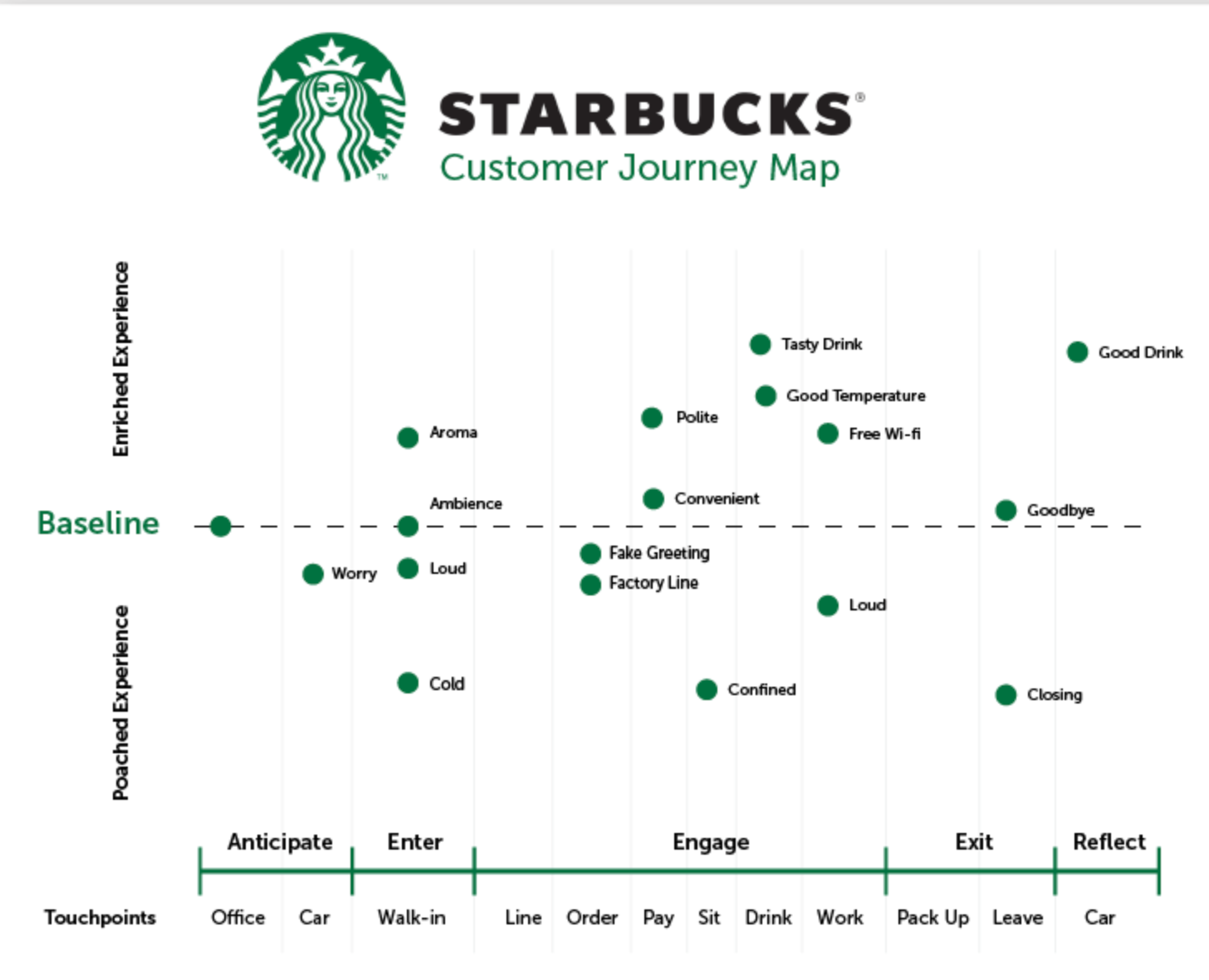
Spotify
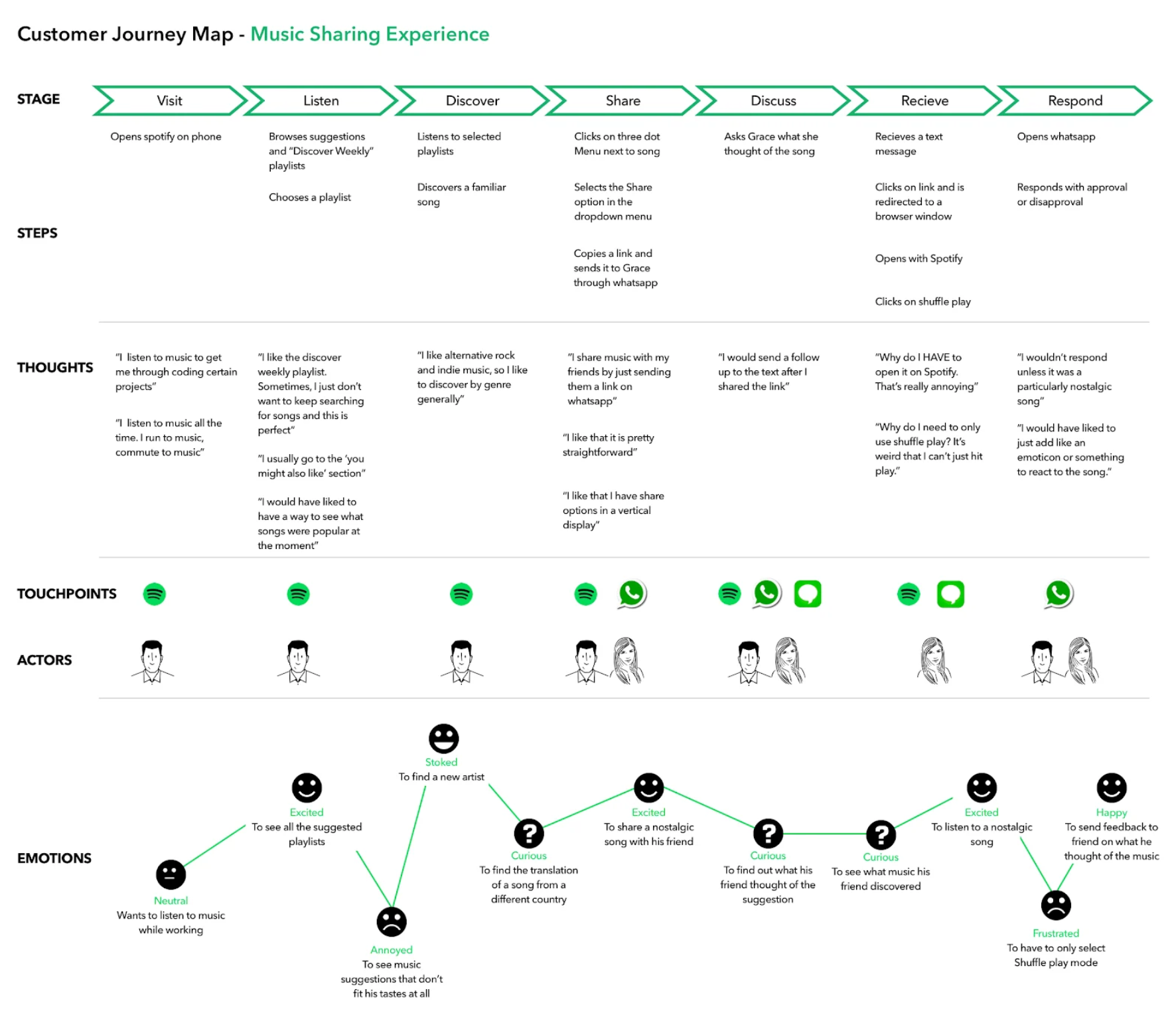
Nike

Conclusion
To sum up, businesses can surely leverage Customer Journey Maps to ensure personalized CX (Customer Experience), heightened customer success, and increased brand loyalty in today’s hypercompetitive business world.
FAQs
1. How does customer journey mapping improve retention?
By pinpointing pain points and challenges in the customer experience, businesses can enhance their interaction with customers, leading to smoother journeys and higher satisfaction. This, in turn, boosts customer retention by nurturing stronger customer relationships and loyalty.
2. What challenges do businesses face in creating customer journey maps?
Challenges include gathering comprehensive data across various touchpoints, ensuring maps stay relevant over time, and achieving cross-functional alignment within the organization to prioritize customer-centric improvements.
3. How can small businesses use customer journey mapping to compete with larger rivals?
Small businesses leverage journey maps to personalize experiences, meet specific customer needs effectively, identify niche opportunities, and build stronger customer relationships, giving them a competitive advantage over larger competitors.
ABOUT THE AUTHOR
Popular from Customer Journey
Quality Content,
Straight To Your Inbox!
Subscribe for the latest blogs, podcasts, webinars, and events!

Write a Blog
If you have experience in CS and
a flair for writing, we’d love to
feature you.
Write to us on
hello@zapscale.com





